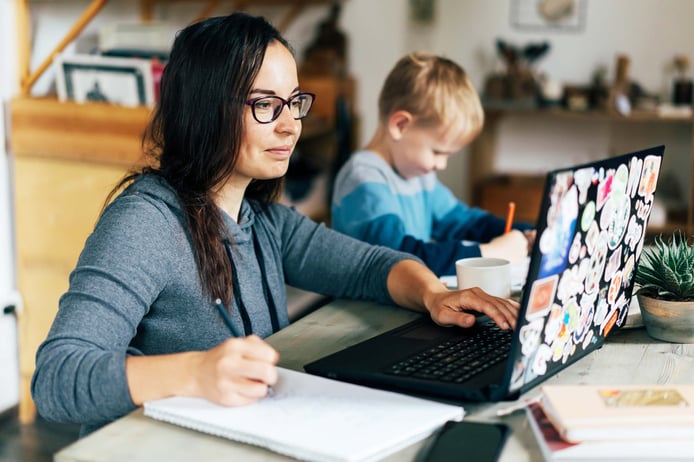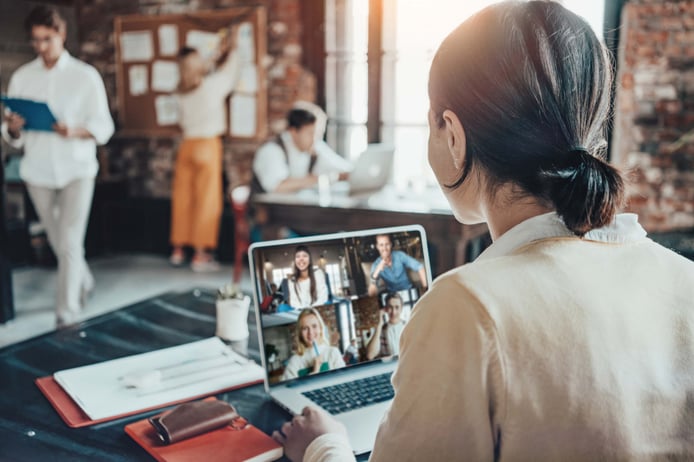
The world has changed, but it is still human nature to connect. Throughout the pandemic, people have found ways to stay connected. Even though corporate events were canceled, and the nature of school changed completely in only a week, people worked to find a sense of normalcy in life. Weddings were postponed instead of canceled. Birthdays were celebrated repeatedly, so both sets of grandparents could attend. Although it seemed everything in the world was trying to separate people from each other and isolate them, they found a way to remain close. People found ways to create new pathways, so they could connect. Digital interaction was key to making this possible.
Pandemic affects more than we expected
The pandemic had many unforeseen consequences. Back in March of 2020, we had no idea that two years later COVID would still play a large role in our lives. The pandemic changed the way we commute to work, the way we think about school, the way we prepare for travel. We have adjusted our church attendance, our sport event attendance, even our theater attendance. During the lockdown, 88% of British theatergoers surveyed said they were as, or more likely to attend a theatre after lockdown as they were before. However, 94% said they would not spend more than £20 (USD $26.41) for a streamed performance. This left a large deficit, compared to when people were willing to pay full price for an in-person performance.

Digital doesn’t mean less meaningful
The need for digital events has had an untold influence on event attendance. Since 2011, Microsoft has held an annual conference called Build. In 2019 there were 6,000 attendees. Because of the pandemic, the 2020 conference was forced to adopt a digital interface. This allowed for more than 230,000 attendees, an increase of more than 3,800 percent! Companies no longer had to pay for airfare, hotels, meals, etc., so more employees could attend, gaining valuable information. This was also beneficial for Microsoft. Because more people attended, Microsoft profited more than it had from previous conferences, and more people received the information the company shared. This is just one example of how the push for digital alternatives to traditional gatherings has created opportunities for more people to participate in events that would have been difficult and costly to attend in person. Digital means have helped eradicate the perception that “putting on an event” requires gathering in one place.
What about the extroverts?
The advantages of using digital means for corporate purposes are many, but there are disadvantages as well. While more people are able to attend events, some, especially extroverts, do not enjoy digital corporate experiences as much as live experiences. Salespeople, for example, can suffer both economically and personally. Human, in-person, face-to-face interaction is an essential part of the workplace for many people. Virtual means allow for connections between people who may not have previously been able to connect, but those connections may not seem as valuable to individuals who enjoy or need more personal contact. The lack of in-person interactions has also cut down on the unprompted informal conversations that are so useful for networking. Even though these kinds of interactions are attempted online, they don’t produce the same results as in-person conversations.
The lasting impact
Now that we have progressed through the pandemic and restrictions have begun to relax, a hybrid work model is becoming much more common. Allowing employees to work partly onsite and partly remotely combines the advantages of digital means with the advantages of hands-on, in-person experience. But even as this hybrid system is becoming more popular, there are kinks to work out. For example, people who join a hybrid conference digitally don’t have the same experience as those who gather in person, and vice versa. Either way, there are pros and cons, but through it all there have been discoveries that have changed how we interact. Weddings can now be streamed; far-away friends and relatives can be part of life-changing events. Grandparents can watch high school basketball games and cheer on their grandchildren. Loved ones in different countries can celebrate births, birthdays, and memorials.
Compared to “the real thing,” digital still feels a bit unhuman. It is unnatural for people to communicate through solely digital means. But the last few years have proven that digital access is far better than none, and that it’s evolving. Human connections and relationships are still being advanced – even if not physically.
About the Author: Writing Intern Sadie balances many different aspects in her life between school and work while trying to incorporate her experiences into her workstyle. As one of the younger, more unconventional members of our team, she believes in attempting to represent people from all walks of life in company writing. When Sadie’s not working on Odigo social posts or creating blogs, she enjoys spending time with her college roommates, studying for her STEM courses, and indulging in outdoor activities. As of right now, she’s building up those muscles working on her climbing skills and has recently taken up running in the mornings.